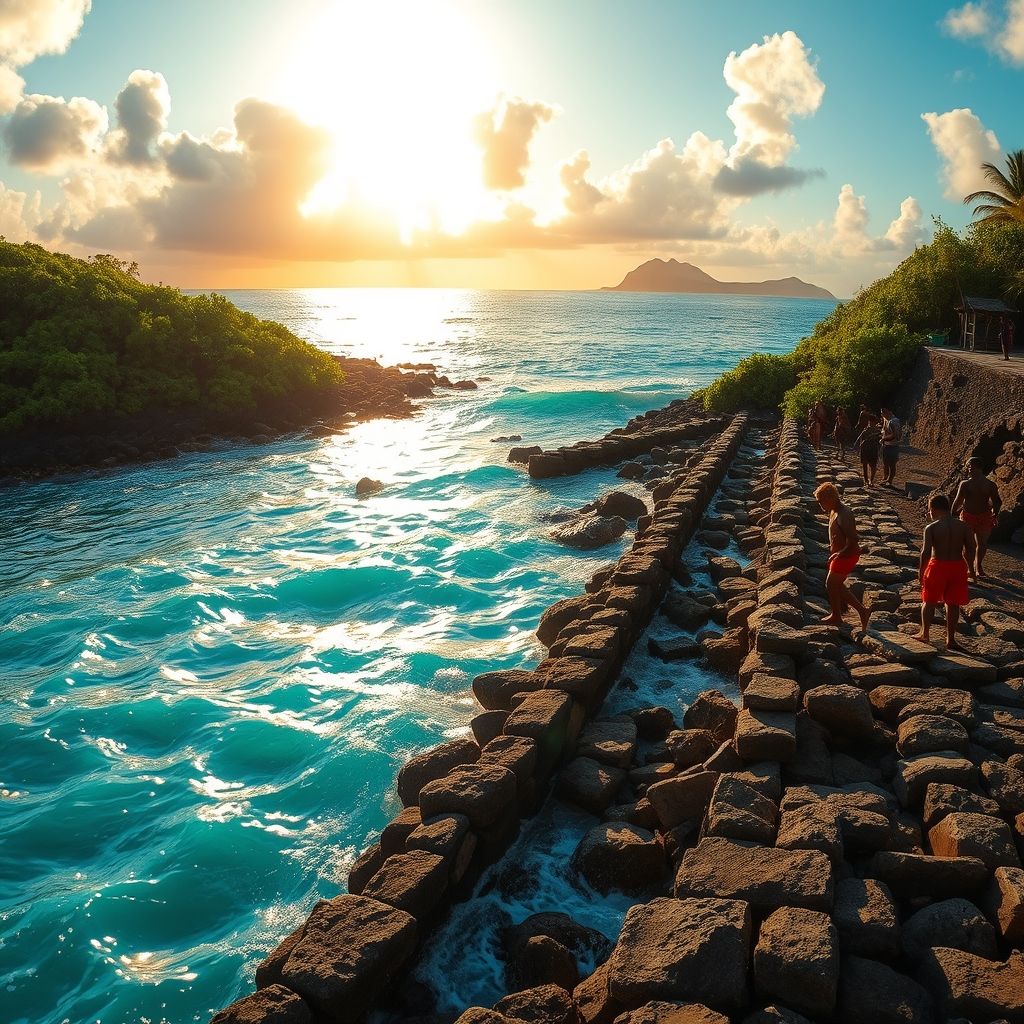How do Pacific islands deal with rising sea levels?
Rising Sea Levels and the Pacific Islands: How These Nations Are Adapting for the Future
When you picture paradise, waves lapping gently on sandy beaches, lush greenery, and vibrant cultures probably come to mind. But for many Pacific islands, this idyllic scene is under threat from an unseen foe—rising seas. With climate change accelerating, these tiny nations are on the front lines, fighting to protect their homes, cultures, and futures. Their stories of resilience and innovation aren’t just inspiring—they offer lessons for all of us about adapting in a rapidly changing world.

Rising Challenges on the Pacific Front
The Pacific islands, scattered across vast stretches of ocean, face a unique predicament. Unlike mainland nations, their land is often just a few feet above sea level, making them highly vulnerable to even small increases in sea levels. Some islands, like Tuvalu and Kiribati, have already seen their coastlines erode and freshwater supplies contaminated. It’s a race against time, with their very existence hanging in the balance.
Engineering Solutions and Infrastructure Adaptation
One effective response many Pacific nations have adopted involves engineering feats that serve as shields against the rising tide. Elevated sea walls, mangrove planting, and artificial islands act as barriers to protect coastlines. For instance, the Maldives has invested in building storm surge barriers—though costly, these structures buy crucial time while the nations seek longer-term solutions.
Some islands are even relocating critical infrastructure and settlements further inland or elevating existing buildings—an expensive and complex undertaking but necessary for survival. The Marshall Islands, for example, are exploring options to move entire communities to safer areas, blending traditional knowledge with modern technology.
Innovative Water and Food Security Strategies
Rising seas threaten freshwater supplies through saltwater intrusion, so islands are adopting innovative approaches. Rainwater harvesting and desalinization plants are becoming mainstays in their efforts to maintain clean drinking water. Agricultural adaptation also plays a role—shifting to drought-resistant crops and developing aquaponic systems that allow farming in limited space. These strategies are vital in ensuring food security amidst a changing climate.
Community-Led Resilience and Cultural Preservation
Beyond engineering and technology, community resilience is key. Many Pacific nations encourage local leadership to maintain cultural practices and traditional knowledge, which often include sustainable land use and water management techniques passed down through generations. Community-led initiatives foster a sense of ownership and adaptability—turning the fight against climate change from a distant threat into a shared mission.
The Bigger Picture: Lessons and Opportunities
What’s happening in the Pacific isn’t isolated—it reflects a global shift towards resilience amid change. Adapting to rising sea levels highlights the importance of innovative asset management, sustainable development, and community empowerment. As these nations experiment with solutions—some temporary, some potentially permanent—they’re also revealing a path for others facing similar challenges across the world.
Meanwhile, the rapid evolution of decentralized finance (DeFi) and AI-driven technologies is transforming how nations and communities fund these adaptation strategies. Imagine using smart contracts to securely finance infrastructure projects or deploying AI models to predict climate impact with pinpoint accuracy. These tools can make resilience more accessible, transparent, and efficient—further empowering these island nations.
The Road Ahead: Embracing Innovation with Caution
For traders and investors, the picture is equally compelling. The rise of AI-driven trading platforms and decentralized finance offers new opportunities—crypto, stocks, indices, commodities—all underpinned by cutting-edge tech that can enhance decision-making and risk management. Leverage trading strategies, when carefully employed, can amplify gains, but they require understanding market volatility and the importance of safety nets like stop-loss orders.
As decentralized finance advances into uncharted territory with smart contracts and AI integration, the future of asset management looks promising—yet it’s essential to stay aware of potential pitfalls, such as security vulnerabilities and regulatory shifts.
Empowering a Resilient Future
Just as Pacific islands are forging new ways to survive rising seas, traders and sectors alike can harness innovative tech to stay ahead of market waves. The message is clear—adaptability and smart innovation can turn challenges into opportunities.
“Surf the tide of change—your future depends on how you ride it.”
By learning from these island communities, we see that resilience isn’t just about bouncing back; it’s about bouncing forward—using creativity, technology, and a little bit of daring to face what’s next.